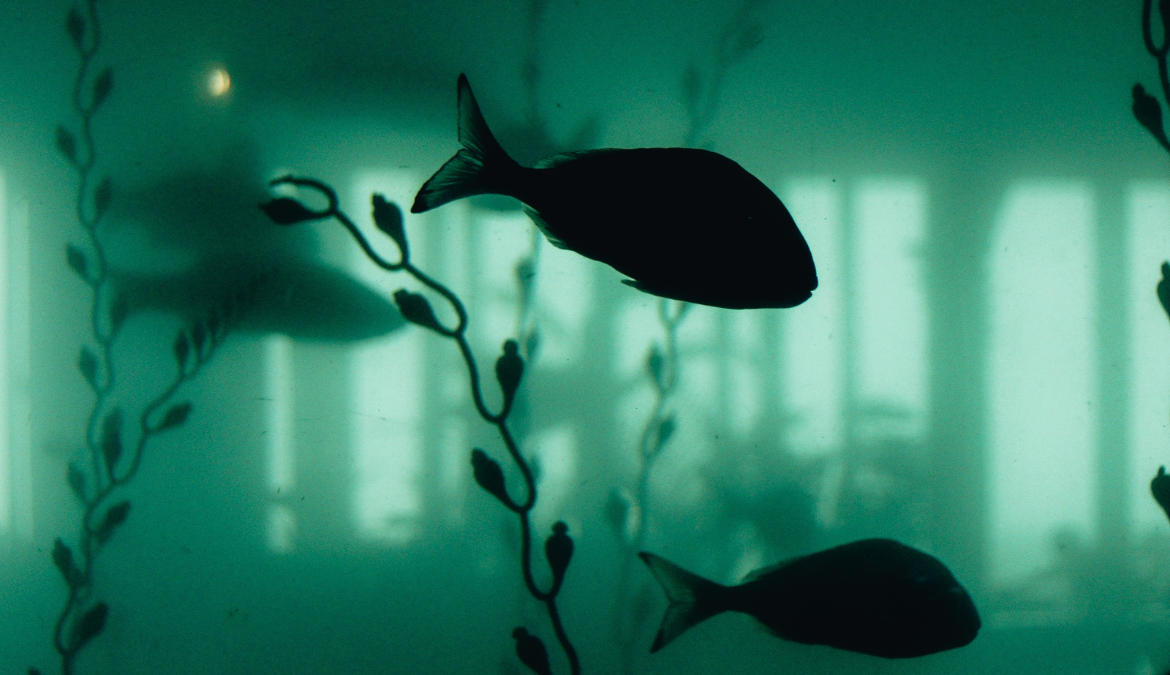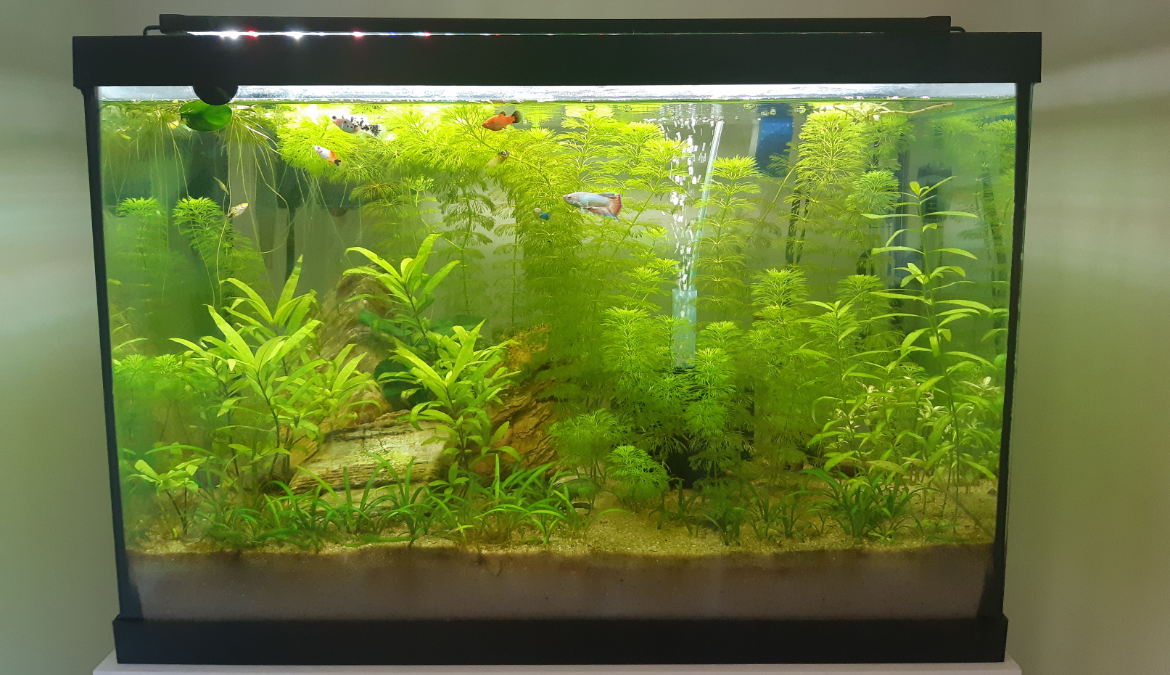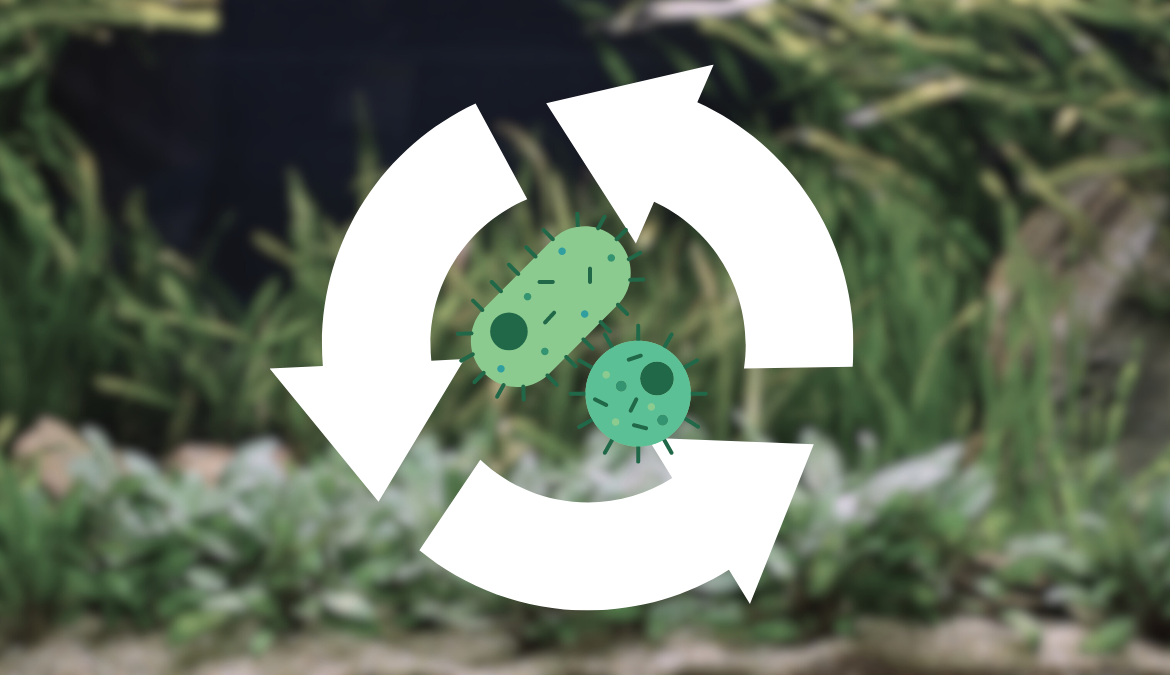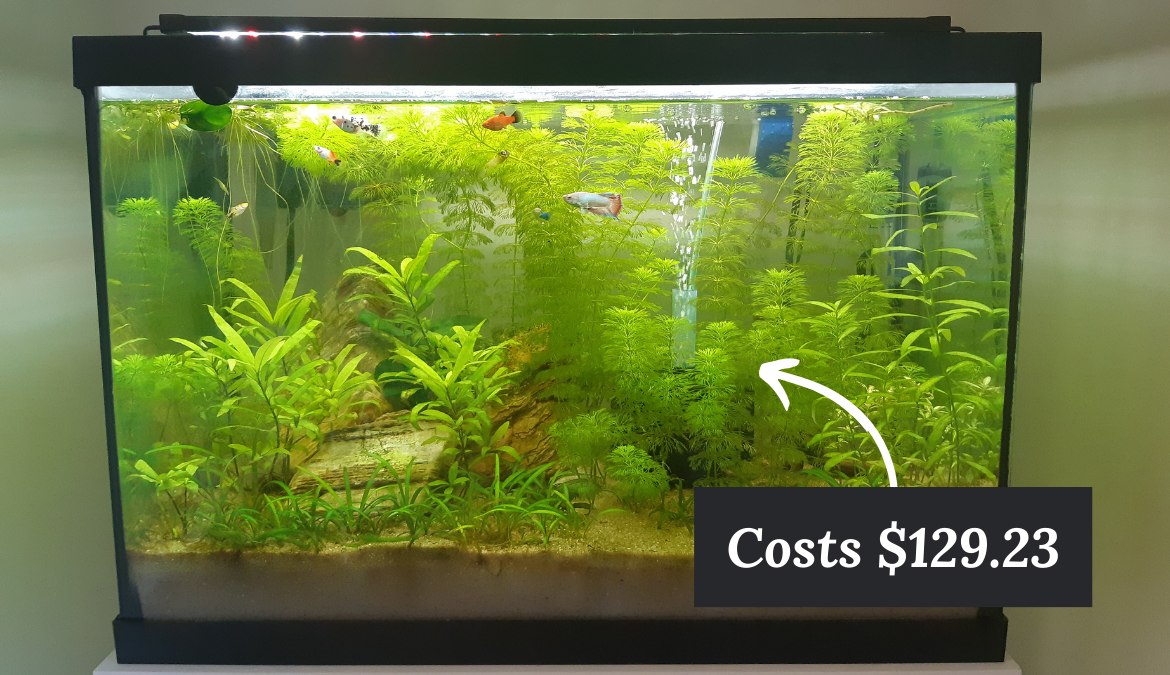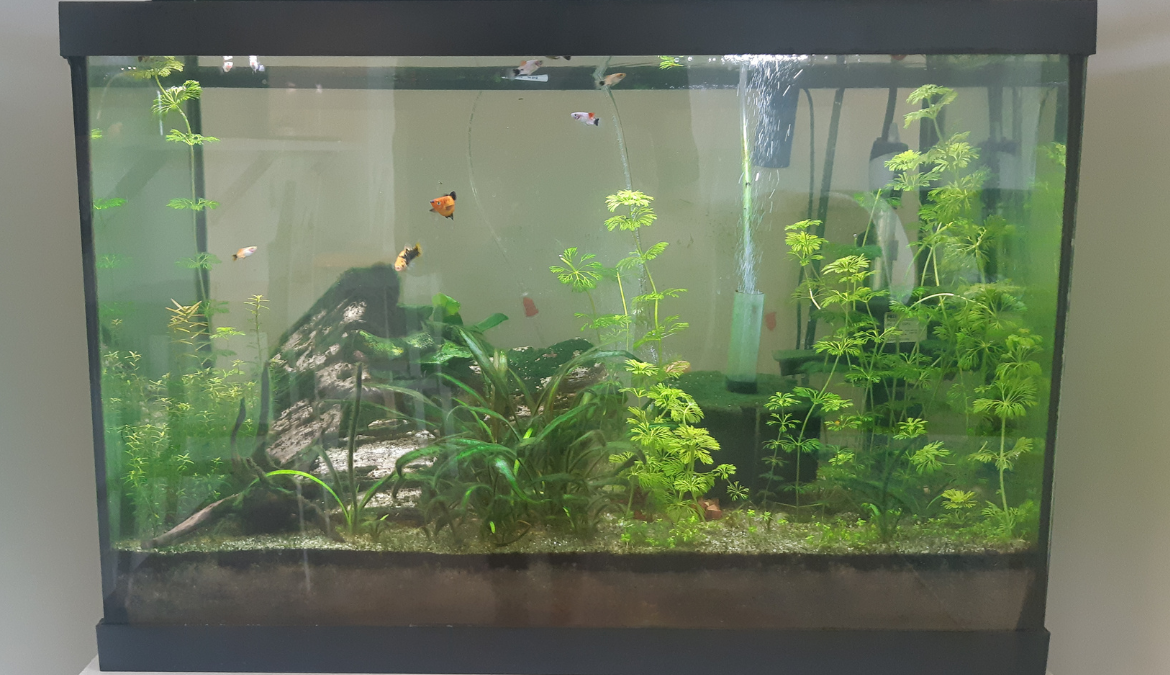Water flow is crucial for successful low-tech plant growth because it increases their uptake of nutrients. For fish, water flow affects their stress levels and overall health, as they are adapted to swimming in currents. A lack of flow can cause stress, while too much flow can also be stressful and lead to exhaustion.
There are a variety of tools, such as powerheads or HOB filters, that can be used to customize an aquarium’s flow rate. This article explains these tactics, best practices for maintaining flow rate and tips for troubleshooting common flow rate problems.
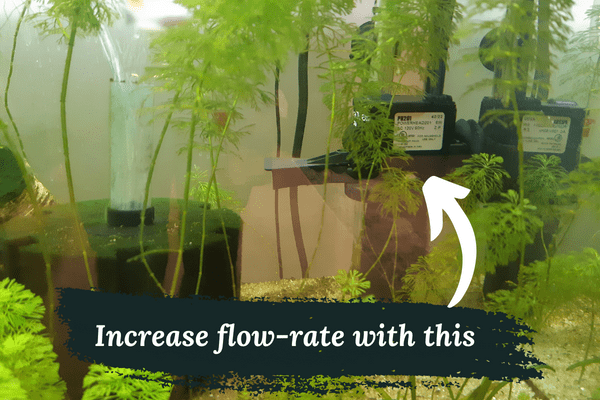
Contents
- 1 Importance of water flow and circulation in low tech tanks
- 2 Does water flow affect fish?
- 3 Can you have too much water flow in a tank?
- 4 How to increase water flow in a low-tech tank
- 5 The benefits of proper water flow and circulation
- 6 Factors that affect water flow and circulation in low tech tanks
- 7 Techniques for measuring and maintaining water flow and circulation
- 8 Sources:
Importance of water flow and circulation in low tech tanks
Water flow is known to be important for both fish health and successful aquatic plant growth. For plants, water flow seems to play a crucial role in helping plants uptake nutrients.
In fact, a study from the University of Queensland (Crossley et. al, 2002) discovered aquatic plants can grow up to 40% larger in flowing water than in stagnant water.
The study compared plant growth based on varying levels of nutrient dosage and water flow. Plants grew best when both the nutrient availability was high and the water had flow. This is why plants tend to grow well in creeks or rivers with constantly flowing water.
The researchers believe the primary reason for growth was due to increased uptake of dissolved inorganic carbon. And the reason for this is because there is simply a higher concentration of nutrients coming into contact with the plant leaves. Essentially, the nutrients are more readily available to be consumed.
Another study from the University of Gdansk had similar findings where higher water flow correlated to higher biomass – larger and heavier plants (Szmeja & Galka, 2008).
Does water flow affect fish?
Water flow also has a significant impact on the health and well-being of fish in an aquarium. Fish are adapted to swimming in currents, so a lack of flow can cause them stress and affect their overall health.
On the other hand, too much flow can also be stressful and lead to exhaustion. The right water flow rate helps to ensure that fish receive adequate oxygen and can swim comfortably, leading to a more active and healthy fish.
It is not well understood exactly why or how water flow affects fish behavior. However, some reasearch has observed changes in fish spawning behavior as a result of hydropeaking, which is the frequent flow fluctuation in rivers as a result of hydropower facilities (Harby & Noack, 2013).
It’s fairly clear that water flow affects fish stress and reproduction so it’s an important element to think about for your home aquarium.
Can you have too much water flow in a tank?
Having too much flow rate in a planted aquarium can be detrimental to the health of the aquatic life and plants. This is because excessive water flow can cause stress to the fish and prevent them from swimming comfortably. It can also create turbulence that can uproot the delicate roots of low-tech plants and disturb the substrate, which can lead to plant death.
Aim for about 5-10 GPH per gallon of tank water. I suggest starting with 5x and working your way up from there.
How to increase water flow in a low-tech tank
Install a powerhead
Powerheads are devices designed to increase water flow and can be easily placed in your aquarium. I personally use the AquaClear Powerhead 20 for my planted 20-gallon aquarium and find that it works great.
It has a maximum flow rate of 127 GPH but can be adjusted down to about half of that, which is adequate for my purposes.
Most people recommend choosing a powerhead with a flow rate of 5-10x the volume of your aquarium. The flow rate, measured in GPH, indicates how many gallons per hour of aquarium water the powerhead will turnover.
A higher flow rate means the water will flow more quickly. Some species and saltwater tanks require higher flow rates. But for most low-tech freshwater aquariums, I recommend choosing one with a very low flow rate to make sure it’s not too much for your fish to handle.
Install a hang-on-the-back (HOB) filter
HOB filters are another great option and work similarly to powerheads. The only different is that HOBs cycle water through a filtration system to clean the water in addition to adding flow.
Ithink this is a great option because they filter itself hangs on the back of your aquarium and does not take up much internal space, unlike a sponge filter. But you want to make sure again that your purchase one with an appropriate flow rate for your tank size and fish species.
The benefits of proper water flow and circulation
Nutrient distribution to plants
Increased flow rates in aquariums can make nutrients, such as liquid fertilizers, more readily available for plants to uptake via their leaves. This is because water flow helps to distribute and mix the nutrients throughout the tank, making them more accessible to the plants.
When water flows past a plant, the plant’s leaves are exposed to higher concentrations of dissolved nutrients, which can be absorbed into the plant’s tissues.
In stagnant water, nutrients can become depleted in certain areas, making it difficult for plants to access the nutrients they need to grow. However, in a well-circulated tank, the water is constantly being mixed and replenished with nutrients, ensuring that the plants have a consistent supply of essential nutrients.
Reduced algae
Increased flow rates in aquariums can help reduce algae growth by improving water circulation and reducing waste accumulation in dead areas. Algae thrives in environments where waste accumulates and nutrient levels are high, creating the perfect conditions for algae to grow and reproduce rapidly.
Also, increased water flow also helps to increase nutrient uptake in healthy aquarium plants, which allows them to compete against algae for the available nutrients in the tank.
Enhanced oxygenation and gas exchange
Increased flow rates in aquariums can help increase oxygen levels in a tank by promoting surface agitation. Oxygen is vital for the health and survival of the aquatic inhabitants in your tank, and it is essential to maintain adequate oxygen levels to support their respiration.
Surface agitation occurs when the surface of the water is disturbed by the flow of water. This agitation increases the surface area of the water, creating more opportunities for gas exchange to occur between the air and water.
The exchange of gases, such as oxygen and carbon dioxide, occurs more readily when the surface area is increased, allowing the tank to receive more oxygen.
Better health and well-being of aquatic life
The increased flow creates a more diverse and stimulating environment, simulating conditions found in the wild. Additionally, the increased surface area from the flow promotes gas exchange, resulting in elevated oxygen levels, which are essential for aquatic life survival.
Maintaining the right flow rate in your aquarium helps to provide your inhabitants with the benefits of a well-oxygenated and stimulating environment.
Improved water quality and clarity
Will stir up loose debris that might otherwise get stuck in dead spots behind rocks and decor. Making it easier for you to gravel vacuum up.
Ultimately, it helps your plants grow. And the more they grow, the more capacity they have to absorb ammonia, nitrite and other dissolved compounds.
Factors that affect water flow and circulation in low tech tanks
Tank size and shape
Increased flow rates in aquariums are typically easier to establish in small and short tanks compared to large and long tanks. This is due to the following reasons:
Small and short tanks have less volume, making it easier to create flow and maintain flow rates throughout the tank. This helps to ensure that water is moving evenly throughout the tank, providing all inhabitants with access to well-oxygenated water.
Large and long tanks are more likely to have dead spots, or areas where water flow is stagnant or weak. These areas are more prone to waste accumulation, which can lead to decreased water quality and the proliferation of algae.
By having increased flow rates, it helps to minimize dead spots and ensure that water is moving throughout the entire tank.
As a result, I believe powerheads are a good thing to consider for 20-gallon or larger tanks.Unlike HOB filters, powerheads can be fully submerged and directionally positioned to allow you to increase flow in dead spots.
Techniques for measuring and maintaining water flow and circulation
Tools and equipment for measuring water flow and circulation
The easiest method involves measuring the amount of time it takes to fill a bucket of a known volume with water from the aquarium.
For example, divide 3,600 (the amount of seconds in one hour) by the amount of seconds it takes your pump/powerhead to fill a 1-gallon bucket of water.
If it takes 30-seconds then your pump has a flow rate of 120 GPH (3,600/30 = 120).
Here’s a demonstration of how to use this method:
Best practices for maintaining proper water flow and circulation
Maintaining proper water flow in a planted aquarium is essential for the health and well-being of the aquatic plants and animals living in the tank. Here are some lesser-known best practices for maintaining proper water flow:
- Use multiple sources of water flow: Using multiple sources of water flow, such as multiple powerheads, can help to distribute water flow more evenly throughout the tank. This can help to reduce dead spots and ensure that all areas of the tank receive adequate water flow.
- Place powerheads strategically: Powerheads should be placed in strategic locations to help distribute water flow evenly throughout the tank. For example, placing powerheads in opposite corners of the tank can help to create cross-flow, which helps to distribute water flow evenly throughout the tank.
- Use a flow deflector: Flow deflectors are devices that can be attached to the end of a powerhead to help direct the flow of water in a specific direction. This can help to reduce dead spots and distribute water flow more evenly throughout the tank.
- Avoid using air-driven filters: Air-driven filters can create turbulence in the water, which can disrupt water flow and lead to dead spots in the tank. Instead, consider using canister filters, which use water to power the filter, or hang-on-back filters, which have a quiet, unobtrusive water flow.
- Regularly clean powerheads: Powerheads can become clogged with debris, which can reduce water flow and create dead spots in the tank. Regularly cleaning powerheads can help to maintain optimal water flow and prevent the buildup of dead spots.
By following these best practices, you can help to maintain proper water flow in your planted aquarium, which will promote the health and well-being of the aquatic plants and animals living in the tank.
How to troubleshoot and fix common issues with water flow and circulation
Troubleshooting and fixing issues with water flow and circulation in a planted aquarium can be challenging, but there are a few common problems that you can address to maintain proper water flow. Here are some best practices for troubleshooting and fixing common water flow issues:
- Clogged or dirty impellers: If your powerhead or pump’s impeller is clogged with debris or algae, it can decrease the flow rate and create a loud or humming noise. To fix this, you need to remove the impeller and clean it thoroughly. This is a simple check to make during your tank maintenance routine.
- Air bubbles: If you notice air bubbles in your water flow, it can indicate a leak in the air line or an issue with the air pump. Check the air line and pump for leaks and replace any damaged components.
- Flow rate too high or too low: If your water flow rate is too high or too low, it can negatively affect the health and well-being of your aquatic life and plants. To fix this, you can adjust the flow rate by adjusting the size or position of your powerhead or by adding or removing restriction valves.
- Dead spots: Dead spots are areas of low or no water flow, and can lead to the accumulation of waste and reduced oxygen levels. To fix this, you can add additional powerheads or rearrange the ones you have to increase water flow and eliminate dead spots.
Sources:
Crossley, M. N., Dennison, W. C., Williams, R. R., & Wearing, A. H. (2002). The interaction of water flow and nutrients on aquatic plant growth. Hydrobiologia, 489(1), 63-70.
Harby, A., & Noack, M. (2013, August). 19 Rapid Flow Fluctuations and Impacts on Fish and the Aquatic Ecosystem. In Ecohydraulics (p. 323).
Szmeja, J., & Galka, A. (2008). Phenotypic responses to water flow and wave exposure in aquatic plants. Acta Societatis Botanicorum Poloniae, 77(1).


